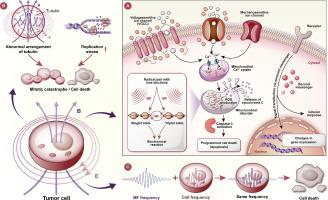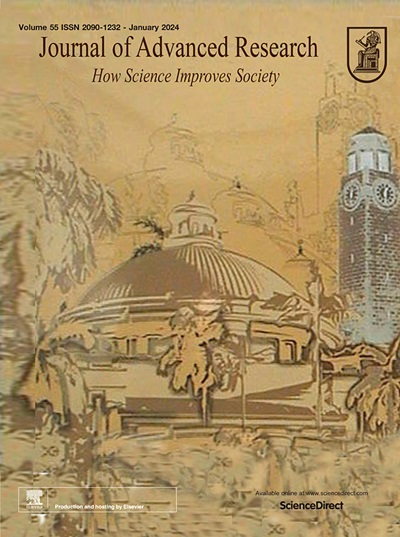Low-frequency magnetic field therapy for glioblastoma: Current advances, mechanisms, challenges and future perspectives
IF 11.4
1区 综合性期刊
Q1 MULTIDISCIPLINARY SCIENCES
引用次数: 0
Abstract
Background
Glioblastoma (GBM) is the most common malignant tumour of the central nervous system. Despite recent advances in multimodal GBM therapy incorporating surgery, radiotherapy, systemic therapy (chemotherapy, targeted therapy), and supportive care, the overall survival (OS) remains poor, and long-term survival is rare. Currently, the primary obstacles hindering the effectiveness of GBM treatment are still the blood-brain barrier and tumor heterogeneity. In light of its substantial advantages over conventional therapies, such as strong penetrative ability and minimal side effects, low-frequency magnetic fields (LF-MFs) therapy has gradually caught the attention of scientists.
Aim of Review
In this review, we shed the light on the current status of applying LF-MFs in the treatment of GBM. We specifically emphasize our current understanding of the mechanisms by which LF-MFs mediate anticancer effects and the challenges faced by LF-MFs in treating GBM cells. Furthermore, we discuss the prospective applications of magnetic field therapy in the future treatment of GBM.
Key scientific concepts of review: The review explores the current progress on the use of LF-MFs in the treatment of GBM with a special focus on the potential underlying mechanisms of LF-MFs in anticancer effects. Additionally, we also discussed the complex magnetic field features and biological characteristics related to magnetic bioeffects. Finally, we proposed a promising magnetic field treatment strategy for future applications in GBM therapy.


胶质母细胞瘤的低频磁场疗法:当前进展、机制、挑战和未来展望
胶质母细胞瘤(GBM)是中枢神经系统最常见的恶性肿瘤。尽管 GBM 的多模式治疗(包括手术、放疗、全身治疗(化疗、靶向治疗)和支持性护理)取得了最新进展,但总体生存率(OS)仍然很低,长期生存更是罕见。目前,血脑屏障和肿瘤异质性仍是影响 GBM 治疗效果的主要障碍。鉴于低频磁场(LF-MFs)疗法与传统疗法相比具有穿透力强、副作用小等显著优势,逐渐引起了科学家们的关注。在这篇综述中,我们阐述了应用低频磁场治疗 GBM 的现状。我们特别强调了目前对低频-磁场介导抗癌效应机制的理解,以及低频-磁场治疗 GBM 细胞所面临的挑战。此外,我们还讨论了磁场疗法在未来治疗 GBM 中的应用前景。
本文章由计算机程序翻译,如有差异,请以英文原文为准。
求助全文
约1分钟内获得全文
求助全文
来源期刊

Journal of Advanced Research
Multidisciplinary-Multidisciplinary
CiteScore
21.60
自引率
0.90%
发文量
280
审稿时长
12 weeks
期刊介绍:
Journal of Advanced Research (J. Adv. Res.) is an applied/natural sciences, peer-reviewed journal that focuses on interdisciplinary research. The journal aims to contribute to applied research and knowledge worldwide through the publication of original and high-quality research articles in the fields of Medicine, Pharmaceutical Sciences, Dentistry, Physical Therapy, Veterinary Medicine, and Basic and Biological Sciences.
The following abstracting and indexing services cover the Journal of Advanced Research: PubMed/Medline, Essential Science Indicators, Web of Science, Scopus, PubMed Central, PubMed, Science Citation Index Expanded, Directory of Open Access Journals (DOAJ), and INSPEC.
 求助内容:
求助内容: 应助结果提醒方式:
应助结果提醒方式:


